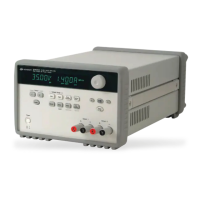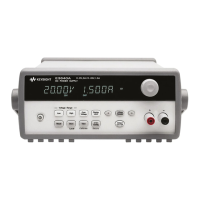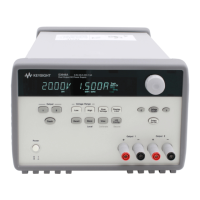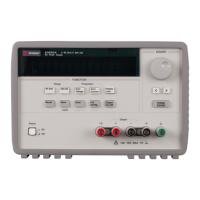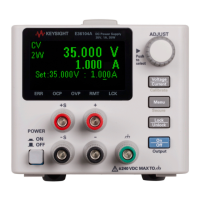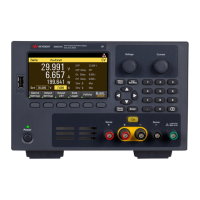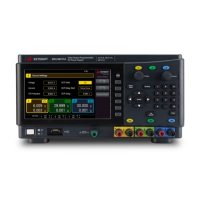3 Remote Interface Reference
126 E364xA User’s and Service Guide
Calibration Commands
Refer to “Calibration” on page 85 for an overview of the calibration features of the
power supply. An example program for calibration is listed in “Calibration
example” on page 128. For more detailed information on the calibration
procedures, refer to the “Service and Maintenance” on page 197.
CALibration:COUNt?
Query the power supply to determine the number of times it has been
calibrated. Your power supply was calibrated before it left the factory. When
you receive your power supply, read the count to determine its initial value.
Since the value increments by one for each calibration point, a complete
calibration will increase the value by six counts.
CALibration:CURRent[:DATA] <numeric value>
This command can only be used after calibration is unsecured and the output
state is ON. It enters a current value that you obtained by reading an external
meter. You must first select the minimum calibration level (CAL:CURR:LEV
MIN) for the value being entered. You must then select the middle and
maximum calibration levels (CAL:CURR:LEV MID and CAL:CURR:LEV MAX) for
the value being entered. Three successive values must be selected and
entered. The power supply then computes new calibration constants. These
constants are then stored in non-volatile memory.
CALibration:CURRent:LEVel {MINimum|MIDdle|MAXimum}
This command can only be used after calibration is unsecured and the output
state is ON. It sets the power supply to a calibration point that is entered with
CAL:CURR command. During calibration, three points must be entered and the
low-end point (MIN) must be selected and entered first.
CALibration:SECure:CODE <quoted new code>
Enter a new security code. To change the security code, first unsecure the
power supply using the old security code. Then, enter the new code. The
When you calibrate the power supply, you should not set the OVP to ON state in
order to prevent OVP from tripping.

